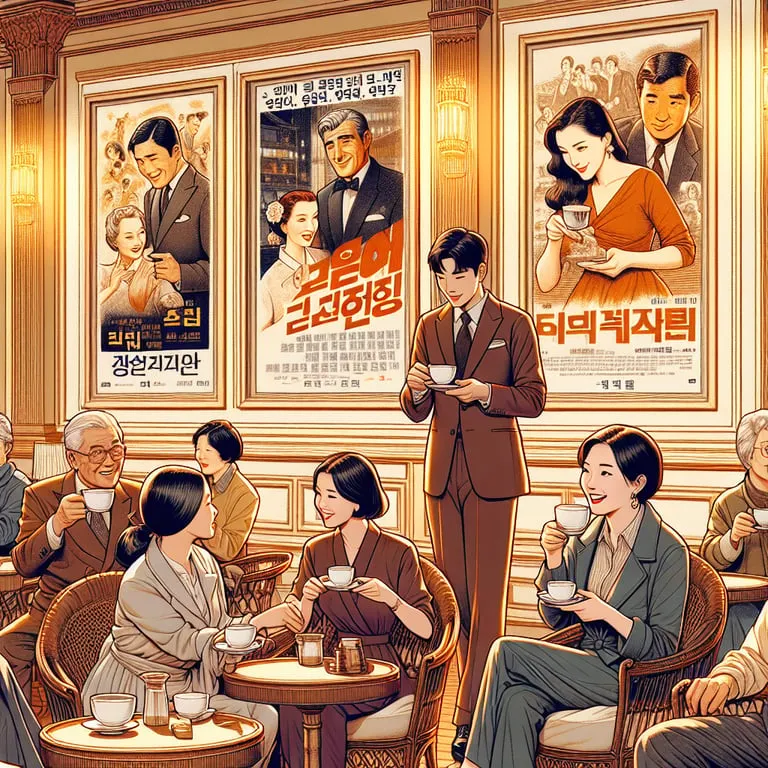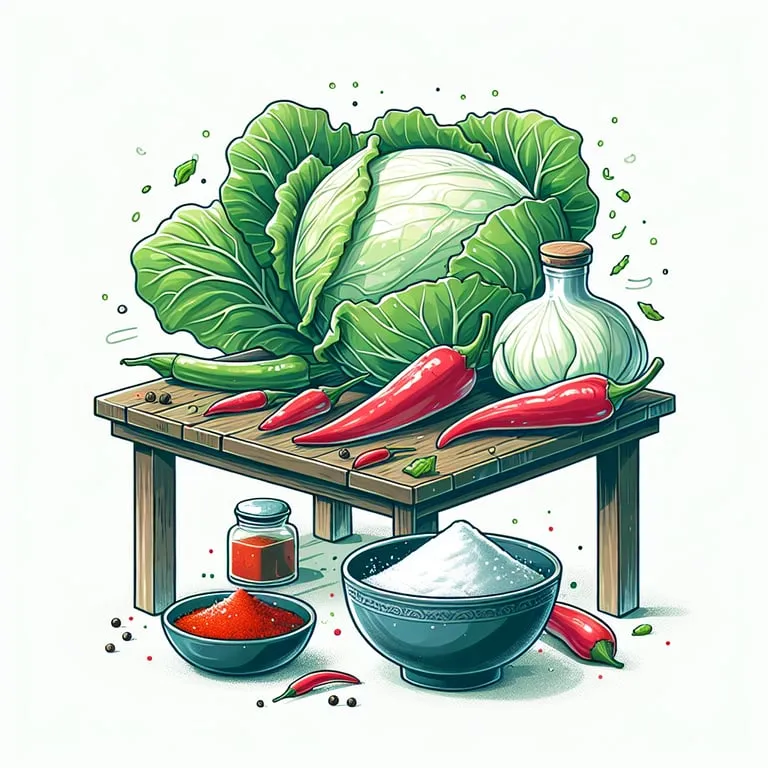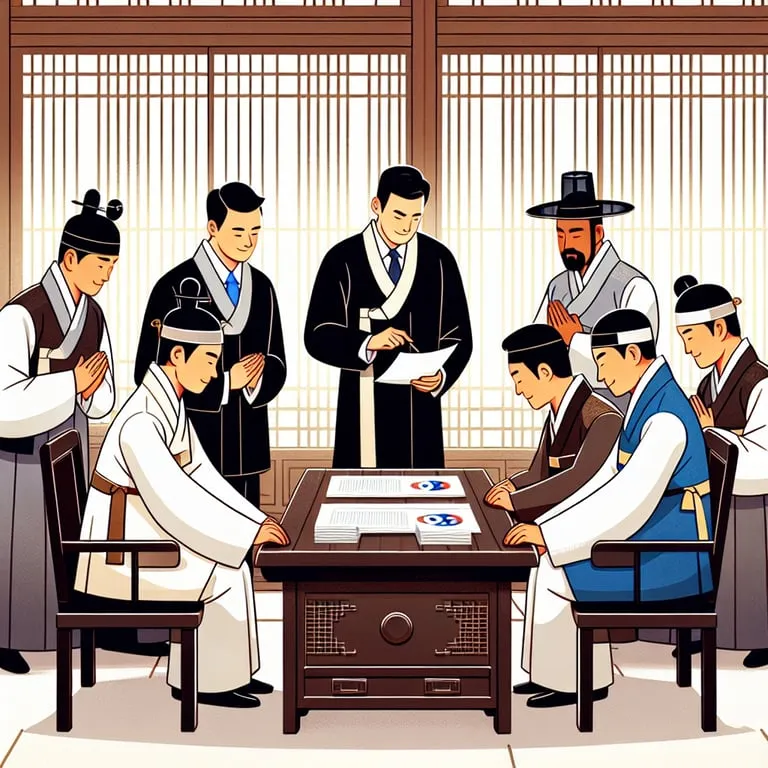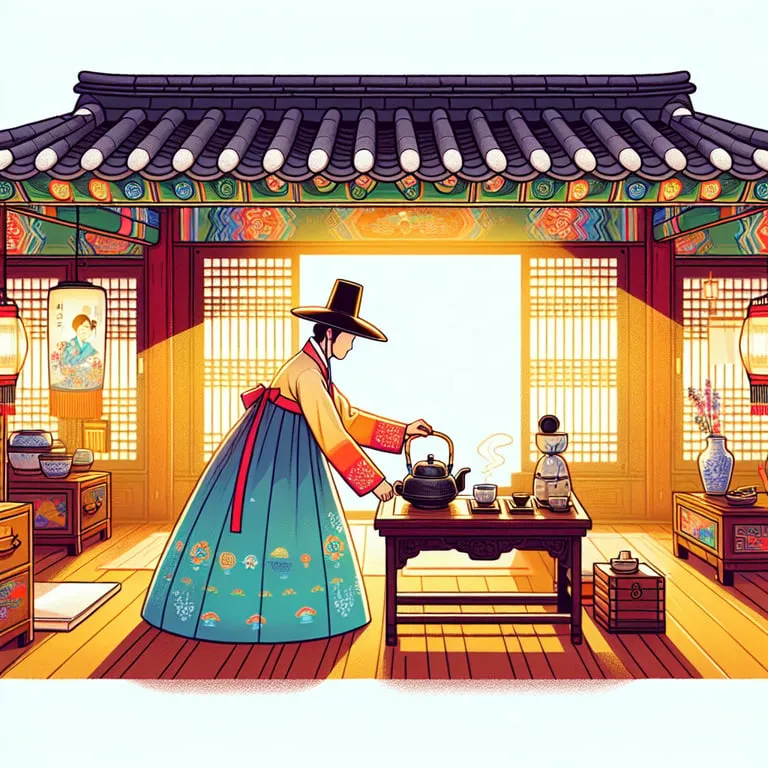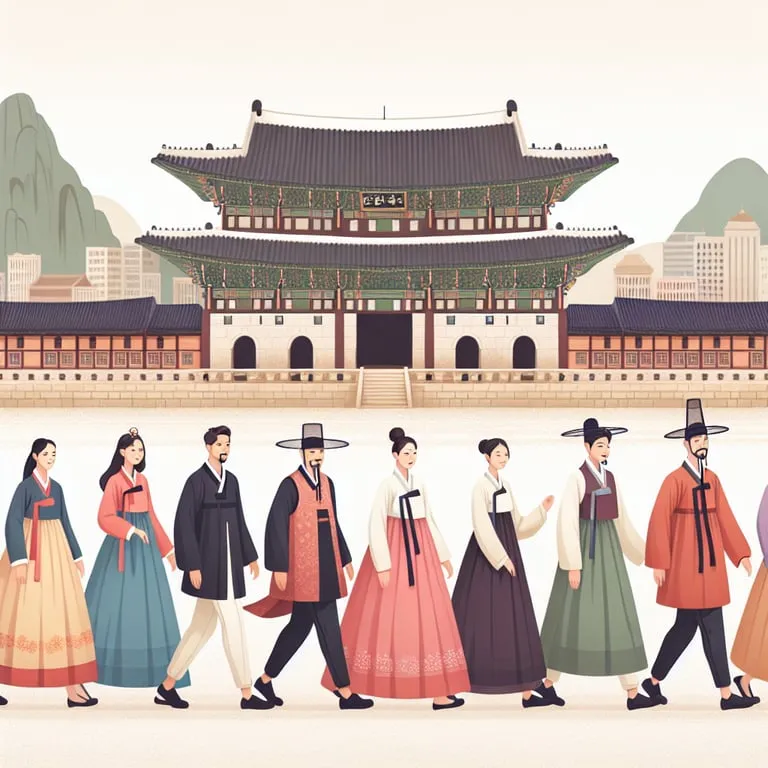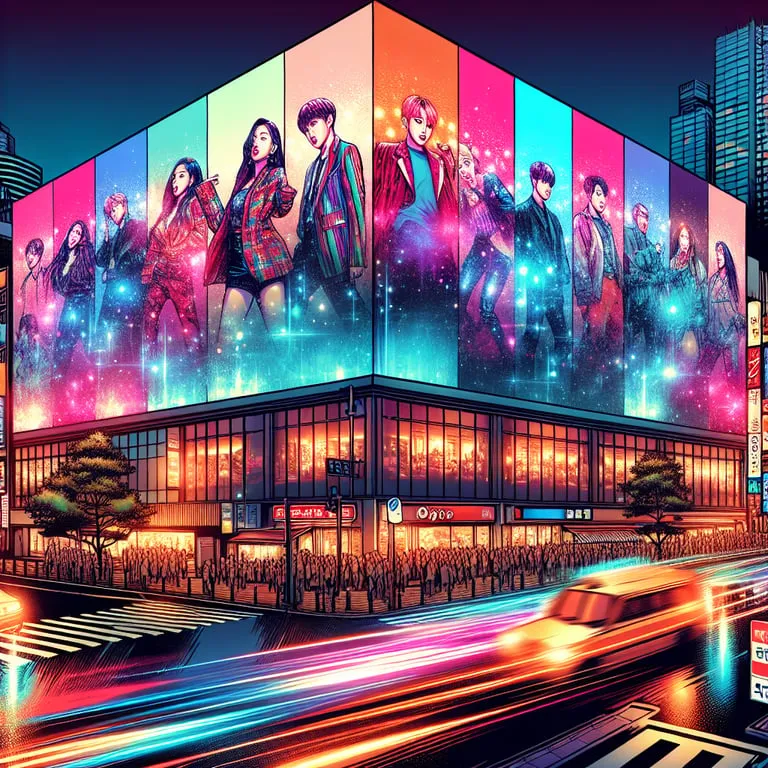Have you ever thought about diving into the world of Hangul, the beautiful and logical writing system of the Korean language? Whether you’re planning a trip to Seoul or just want to broaden your linguistic skills, learning Hangul is a rewarding journey. In this blog post, we’ll explore helpful tips and tricks, making the process less daunting and more enjoyable. From understanding the very basics to avoiding common pitfalls, I promise to make this experience as smooth as your favorite cup of coffee. Let’s embark on this linguistic adventure together!
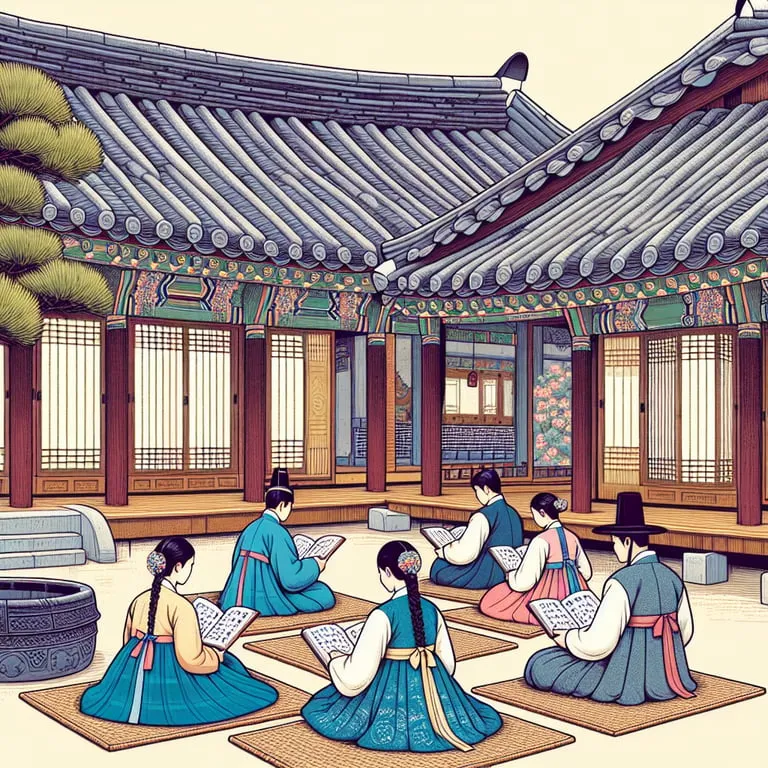
Understanding the Basics of Hangul
So, you’re diving into the world of Hangul?! That’s awesome~! 🙂 Understanding the basics of Hangul will set the stage for your Korean language journey. This systematic writing system, created in 1443 by King Sejong the Great and his scholars (collectively known as the Hall of Worthies), is the foundation of the Korean language. Before Hangul’s invention, Koreans used Classical Chinese characters, which made literacy a privilege of the educated elite. Hangul democratized literacy, and now it’s time for you to explore this fascinating script!
Let’s start with the structure!
Hangul is an alphabetic system, but it might seem like a series of intricate symbols at first glance. Each Hangul syllable is composed of a tightly-knit block of characters: initials (consonants), medials (vowels), and, sometimes, finals (consonants)! Think of it as a puzzle where you fit the pieces together: 하나 (ha-na), a common way to say ‘one’ in Korean, neatly encapsulates this setup with its “ㅎ”, “ㅏ”, and “ㄴ” characters molded together.
Consonants and Vowels
The building blocks of Hangul, amount to 14 basic consonants and 10 basic vowels. However, when you include the doubled (or “tensed”) consonants like “ㄲ”, “ㄸ” and additional complex vowels like “ㅐ”, “ㅔ”, or even diphthongs like “ㅘ”, “ㅢ”, the total count rises! This built-in versatility allows for the creation of a vast array of sounds, truly reflecting the rich tapestry of Korean pronunciation.
The consonants are modeled on the articulation points of the mouth! Originating from representations of the mouth shape when making that sound—cool, right?! For instance, “ㅂ” denotes the sound ‘b/p’ and is visualized with closed lips, mimicking the movement of your lips. Similarly, vowels represent the three elements of eastern philosophy: Heaven (represented by a dot, which later developed into a short line), Earth (represented by a horizontal line), and Humanity (represented by a vertical line). In modern Hangul, these are abstracted but still retain this symbolic significance.
Intriguing Aspects of Hangul
Another intriguing aspect of Hangul is the balance and symmetry it shows within its syllable blocks. Each one of these blocks forms a neat square, making the writing aesthetically pleasing and easy to read once you get the hang of it. It’s no surprise that Hangul is lauded for its scientific design, transcending simple aesthetics to become highly functional as well.
Practical Tip Time!
To familiarize yourself with Hangul, practice writing your name or favorite words in Korean. This exercise will not only make learning fun but also help solidify your grasp on how consonants and vowels interact within each square block. Moreover, this hands-on approach offers a tactile sense: feel the strokes, understand their order—which by the way is top to bottom, left to right—and find satisfaction in seeing it come to life before your eyes.
Phonetic Regularity
Phonetic regularity is another friendly feature Hangul provides. For beginners, this means that most words you read in Hangul are pronounced as they’re written; wonderful news for those struggling with silent letters or pronunciations muddled by numerous exceptions in other scripts! Of course, there are exceptions due to phonetic changes, like ‘batchim’ rules, where the consonant at the end of a syllable block might not sound as you expect, but they’re usually easy to catch onto with a bit of practice.
Cultural Nuances
Did you know? In the North and the South, despite speaking a ‘common’ language, subtle differences exist! South Korea employs a standard that includes several loanwords, whereas North Korea emphasizes ‘pure’ Korean. These nuances reflect how cultural and political landscapes influence language evolution.
Sketch down this sentiment: Hangul is a gateway, not just to a language, but to understanding a vibrant culture. By decoding this beautiful script, you unravel historical narratives and connect with traditions centuries-old, leading you through a journey not just in language learning, but cultural appreciation as well!
Feel free to get cozy with the basics, repeat the drills, and soon Hangul characters will be more familiar than ever! Your proficiency with them will open doors, unlock dialogues, maximize your enjoyment of Korean media, and possibly, overseas adventures~! Who knows?! 🙂
Effective Techniques for Memorizing Characters
Diving into the world of Hangul can be exhilarating yet a bit daunting at first. Fear not, as mastering the art of memorizing Hangul characters is well within your grasp with the right strategies! Let’s journey together through some proven techniques that will transform those seemingly cryptic symbols into something as familiar as the alphabet. Ready to make Hangul your new best friend? Let’s do this!
Visualization and Association
One of the most powerful methods you can employ is visualization combined with association. Our brains excel at recalling images compared to abstract symbols. Visualize each Hangul character as an image or object that resembles something familiar. For example, the character “ㄱ” can be seen as an angled corner or a part of a railing. By creating such associations, you tap into the brain’s natural affinity for visual memory. Studies show that associating images with symbols can boost recall by up to 65% over a sustained period. Wow!
Mnemonics
Mnemonics are a fantastic trick for memory retention. You can create little stories or phrases that incorporate the sounds of the characters. Take “ㄴ”, which sounds like ‘n’. Imagine a “nose” because “ㄴ” kind of looks like a flexible nose bridge. Laugh if you must, but quirkiness often cements the mnemonic techniques in your mind! Weird works.
Chunking and Spaced Repetition
Don’t cram! Chunking your learning material into manageable sections is more effective, especially when combined with spaced repetition. The human brain can only process a limited amount of information at once. Based on the spacing effect, consistently reviewing a few characters daily rather than trying to memorize everything in a single session leads to longer retention periods and is about 200% more effective! The algorithm behind apps like Anki leverages this principle seamlessly.
Active Recall
Actively engage with what you’ve learned instead of passively reviewing. Create flashcards, write down the characters by hand repeatedly, and test yourself regularly. Your initial retention when using active recall methods can improve up to 60%. It’s not only about memorizing; it’s about mastering.
Multi-Sensory Learning
Engage multiple senses to reinforce your learning experience. This method can elevate your understanding to new heights. Listen to the audio pronunciations of Hangul while you trace characters in the air, or even taste Korean food while you study! Connections made through sensory learning can stimulate memory through association—a practice shown to enhance encoding and recall by 50%.
Social Learning and Teaching
Don’t go at it alone—find a language partner or study group. According to Vygotsky’s social learning theory, learning blossoms in a social context. Explaining characters to someone else not only reinforces your own understanding but increases the likelihood of retaining this information by 70%. Not to mention, laughter and camaraderie can sweeten the struggle of memorization.
Consistency and Patience
Approach your Hangul learning with patience and consistency. Daily practice—even if it’s just 10 minutes a day—can make a tremendous difference. Like any skill, memorization requires practice and perseverance. Remember, Rome wasn’t built in a day and neither is your Hangul expertise.
Set milestones, but don’t beat yourself up if you hit the odd bump along the way. Progress might be slow, but it’s steady, and that’s what matters in the marathon of language fluency. Keep a journal of your challenges and triumphs along the way. Observing your journey over weeks and months will provide motivation to keep you moving forward.
Armed with these techniques, your journey to memorizing Hangul is bound to be an enlightening and successful adventure. With every character you master, you gain another piece in the puzzle of the rich tapestry that is the Korean language. Have faith in the process, and trust in your ability to adapt and grow. Stay curious, and let Hangul unravel its secrets to you. You’ve got this! ^^
Common Pitfalls and How to Avoid Them
Ah, the excitement of diving into a new language like Hangul! It’s truly a fascinating script with its logical structure and aesthetic appeal. However, I must remind you, as enticing as it is, beginners often stumble into certain common pitfalls that may muddle their journey. But don’t worry, we’re here to clear the fog and keep you on track! 😊
Incorrect Pronunciation
Let’s talk about the first pitfall: incorrect pronunciation. Hangul characters, known as “Jamo,” can seem straightforward at first glance. Yet, the devil is in the details. For instance, the subtle nuances between ㄱ (giyeok) and ㅋ (kieuk) could trip you up quite easily. They sound quite similar, but ㄱ is softer than ㅋ, which has a stronger expulsion of air, almost like saying “k” with a bit of a punch! Mispronunciation here might lead to misunderstandings that could spiral into full-fledged communication breakdowns 😲. To avoid this, practice with native Korean speakers or use language apps like Tandem or HelloTalk, which can provide real-time feedback.
Over-Reliance on Romanization
Moving on, we find the next hurdle: over-reliance on Romanization. This might seem like a convenient shortcut (who doesn’t love a good shortcut?!), but my advice is to resist the urge. Romanization often fails to accurately capture the true phonetic value of some Hangul characters, leading to bad habits that are tough to shake off later. Instead, immerse yourself in Hangul from day one. You’ll grasp the unique consonant and vowel sounds more naturally and become more adept at reading entire words in their original script before you know it!
Neglecting the Importance of Stroke Order
Another trap that looms large is neglecting the importance of stroke order. To a beginner, stroke order might appear as an optional detail, but missing out on this could be to your detriment. It’s not just about aesthetics; proper stroke order ensures your Hangul is legible to others and helps you write with speed and accuracy. It’s similar to how English cursive writing can be unreadable if the strokes are in the wrong sequence. Spend some time using workbooks specifically focused on stroke order, or watch step-by-step YouTube tutorials that break down each character’s formation.
Memorizing Hangul Characters
Now, let’s discuss the challenge of memorizing Hangul characters. Some learners fall into the pit of excessive focus on flashcards or rote memorization without understanding the logic behind the script. Hangul is not just a random set of symbols; it was beautifully designed by King Sejong in the 15th century to be intuitive and easy to learn. Each character is meant to represent the shape of your mouth and tongue during pronunciation. Isn’t that ingenious?! Instead of rote memorization, spend time understanding this logic, and you’ll find memorizing them becomes more of an intriguing puzzle than a chore 😄.
Lack of Cultural Context
One often overlooked aspect is the lack of cultural context when learning a language. Many learners dive into grammar and vocabulary like there’s no tomorrow, and while these are undoubtedly crucial, understanding cultural nuances can make or break your ability to communicate effectively. The same word or phrase might have different connotations depending on cultural context; similar to how “What’s up?” is a friendly greeting in English, but could be perplexing if translated directly into another language. To sidestep this pitfall, try immersing yourself in Korean culture through films, music, and books which will give you a richer sense of the language’s place in everyday life.
Impatience for Fluency
One last pitfall on our radar today is the impatience for fluency. We all want to be able to chat away effortlessly in a new language as soon as possible, but language learning isn’t a sprint—it’s more of a leisurely marathon. A mistaken belief prevalent among beginners is the expectation for quick fluency. According to research, it takes around 600–750 hours of dedicated study to achieve general professional proficiency in Korean, classified as a Category III language by the Foreign Service Institute. The trick is to set realistic goals and celebrate small victories along the way to stay motivated!
There you have it, a blueprint to navigate the common pitfalls of learning Hangul and come out victorious (and fluent) on the other side! Keep these insights close, and let them be your guide as you embark on this rewarding linguistic adventure. Language learning is as much about enjoying the journey as it is about reaching the destination. Happy learning~!
Resources for Further Practice and Improvement
Once you’ve dived into the intriguing world of Hangul, it’s natural to seek resources that can help you refine and expand your skills. Fear not! The resources for further practice and improvement are plentiful, and I’m here to share some great recommendations that can transform your learning journey from “I know a little” to “I’ve got this!”.
Language Apps
1. Language Apps: If there’s one thing we’ve learned in this age of technology, it’s that there’s an app for almost everything, and learning Hangul is no exception. Apps like Duolingo, LingoDeer, and Memrise offer structured lessons on Hangul where you learn at your own pace. These apps are designed not just to teach you characters but to help build vocabulary and grammar skills too. For example, Duolingo uses a spaced repetition system that increases retention—ideal for memorizing those tricky Hangul letters!
Online Tutorials and Videos
2. Online Tutorials and Videos: Platforms like YouTube and Coursera are treasure troves of free lessons on Hangul. Influencers and educators such as Sweet and Tasty TV and Korean Unnie make learning fun and approachable. Through their engaging videos, you can practice pronunciation, recognize nuances in the language, and even pick up some slang to sound like a native!! The interactive nature of videos can help improve listening skills, which is vital when mastering any new language.
Flashcards for Mastery
3. Flashcards for Mastery: Remember those old-school flashcards? Well, they’ve gotten a digital makeover! Apps like Anki and Quizlet allow you to create personalized flashcards and quizzes to test your Hangul knowledge. Did you know the visual aid of flashcards can help increase recall by up to 50%?! With thousands of user-generated Hangul decks, you’ll find sets catering to all levels—from beginner to advanced. This technique can be incredibly powerful when paired with the spaced repetition feature many of these apps offer.
Social Media and Online Communities
4. Social Media and Online Communities: Why not transform your scrolling time into learning time? Joining online communities can provide a sense of camaraderie and accountability. On platforms like Reddit and Facebook, groups such as “Learn Korean” or “Korean Language Exchange” allow for interaction with fellow learners and native speakers. Sharing experiences and tips adds depth to your learning and can make a huge difference when you’re feeling stuck or unmotivated.
Books and Guides
5. Books and Guides: If you love a good old-fashioned book, you’ll be glad to know there are exceptional resources like “Korean Made Simple” by Billy Go and “Integrated Korean” by KLEAR Textbooks. These books provide comprehensive lessons that start with the basics and work up to more complex language structures. Moreover, they often include cultural notes that give a broader understanding of how the language functions in context—pretty neat, right?
Language Partners
6. Language Partners: Looking to make language learning more personal? Finding a native Korean language partner could be a game changer. Websites like Tandem and HelloTalk connect learners with native speakers, allowing for language exchange right at your fingertips. This is not only a more immersive experience but it also aids in learning authentic pronunciations and idiomatic expressions that textbooks might miss.
Korean Podcast and Audio Resources
7. Korean Podcast and Audio Resources: Immersing yourself in the auditory nuances of any language can speed up your learning curve. Korean podcasts, like “Talk To Me In Korean,” offer bite-sized lessons that you can listen to during commutes or while doing chores. Interestingly, listening to a language in authentic contexts can increase comprehension by 45% more rapidly than traditional textbook methods!
Local Classes and Meetups
8. Local Classes and Meetups: Check if local community centers or universities offer Korean language classes. More personal and direct interaction with an instructor can greatly benefit language acquisition. Additionally, joining meetups can be both enriching and fun—imagine discussing K-dramas and K-pop with people who share your love for Korean culture while simultaneously practicing Hangul!
And there you have it! Whether you dive deep into books, chat with language partners, or learn through apps, exploring these diverse resources can ignite your path to mastering Hangul in a truly interactive and engaging manner. Happy learning!
Embarking on the journey to learn Hangul can be both exciting and rewarding. With a solid understanding of the basics and effective memorization techniques, you’re well on your way to mastering this beautiful script. Remember to watch out for common pitfalls, and don’t hesitate to explore various resources for extra practice and improvement. Embrace the process, stay curious, and enjoy the progress you’re making. Keep practicing and immerse yourself in the language, and you’ll find that each step brings you closer to fluency. Keep it up, you’re doing great!
